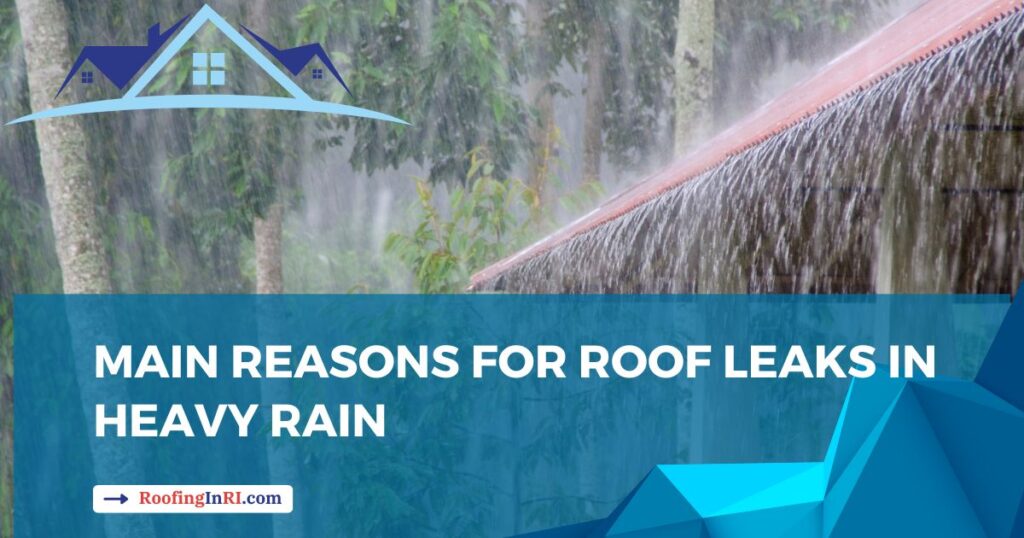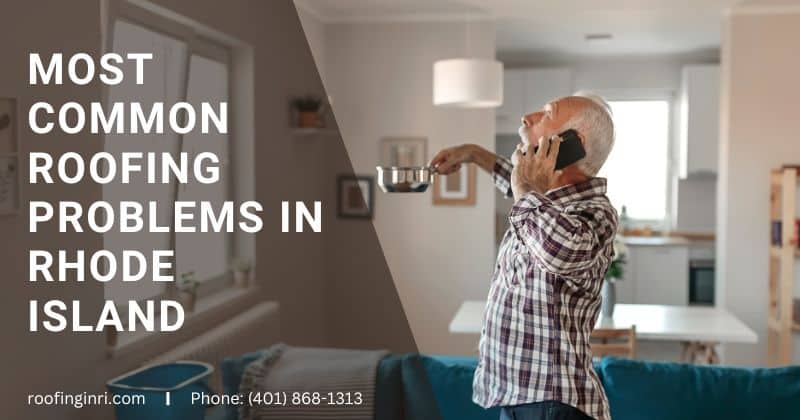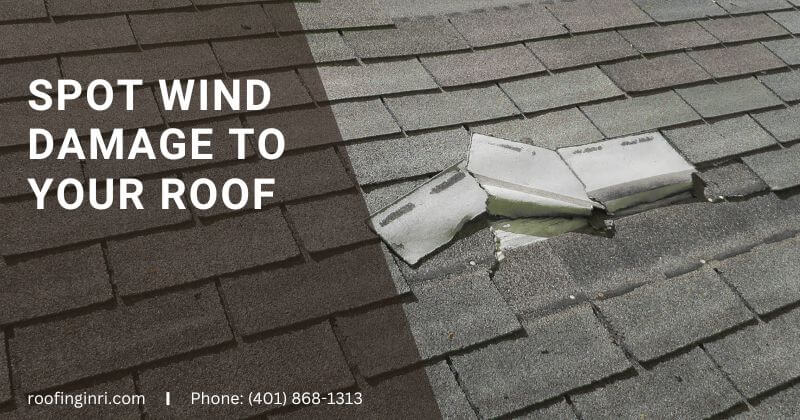Leaking roofs in heavy rain is a common problem for many homeowners, especially for shingles, tiles, and metal roofs. Your home is your shelter, and your roof is the shelter of your home. So, the importance of the roof is vast; without it, a home is incomplete.
A roof shields your home from rain, wind, snow, and sun. However, even the sturdiest roofs can falter during heavy rain, leading to frustrating leaks.
Finding the leaks can be easy, but identifying the reason or source may be challenging. Understanding common culprits can help you pinpoint and rectify the issue efficiently.
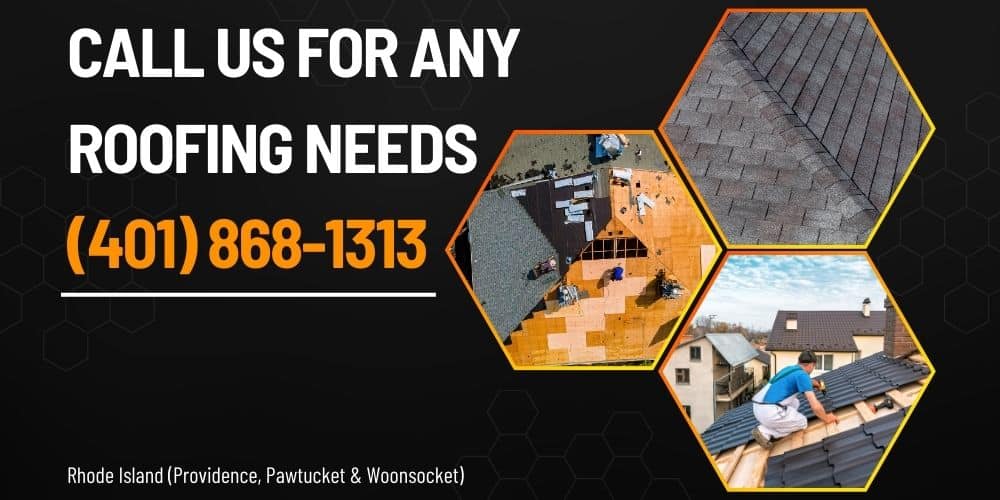
In this post, I will investigate seven roof leaks in heavy rain and explore practical solutions.
Let’s get started.
Seven reasons for roof leaks in heavy rain
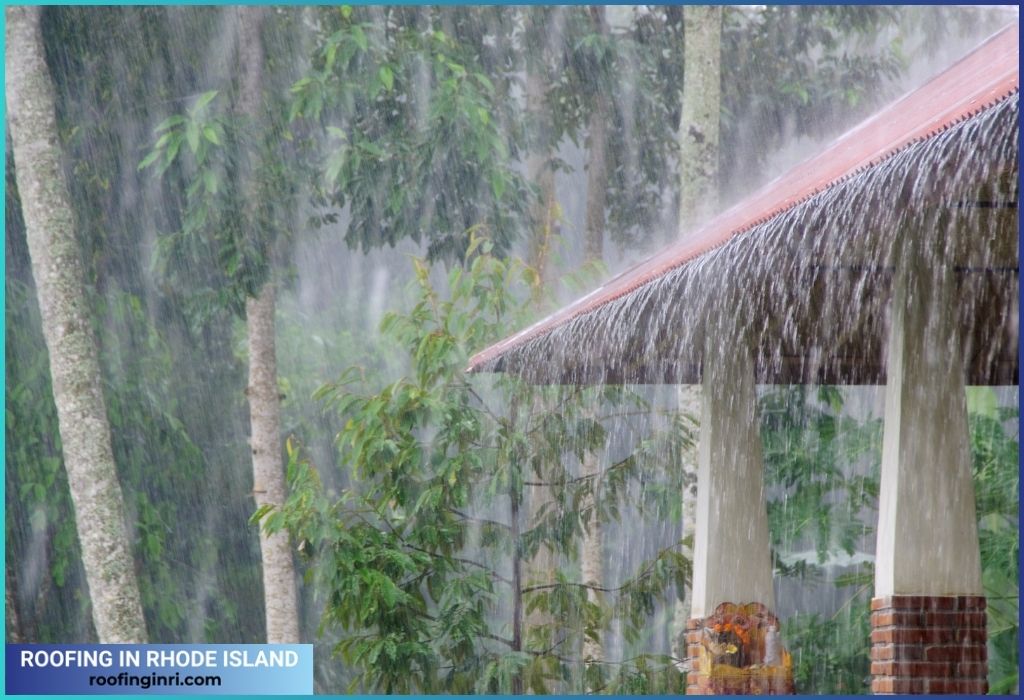
Your Skylight
Skylights are a popular addition to homes, bringing natural light into interior spaces. But if you do not install it correctly or neglect maintenance, the skylight can be the source of leaks during heavy rain.
Common issues with skylights include improper sealing, cracked glass, or damaged flashing around the perimeter.
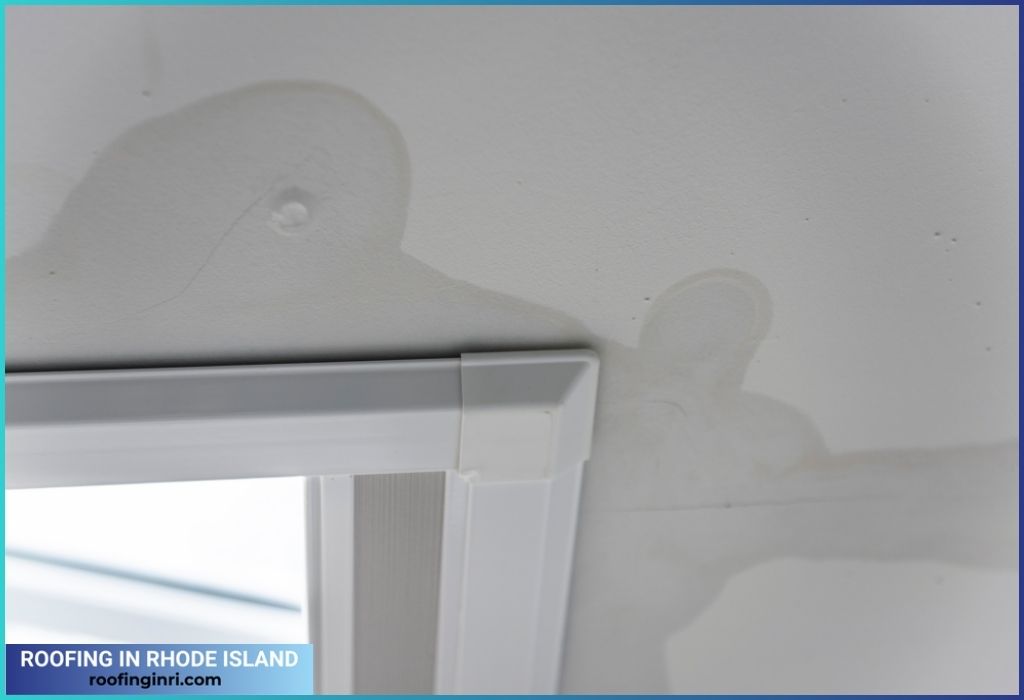
To address skylight leaks, inspect the sealant and flashing for signs of wear or damage.
Replace any deteriorated sealant and ensure the flashing is securely fastened and gap-free. To prevent further leaks, professional resealing or even skylight replacement may be required.
Related: Will home insurance cover a leaking roof?
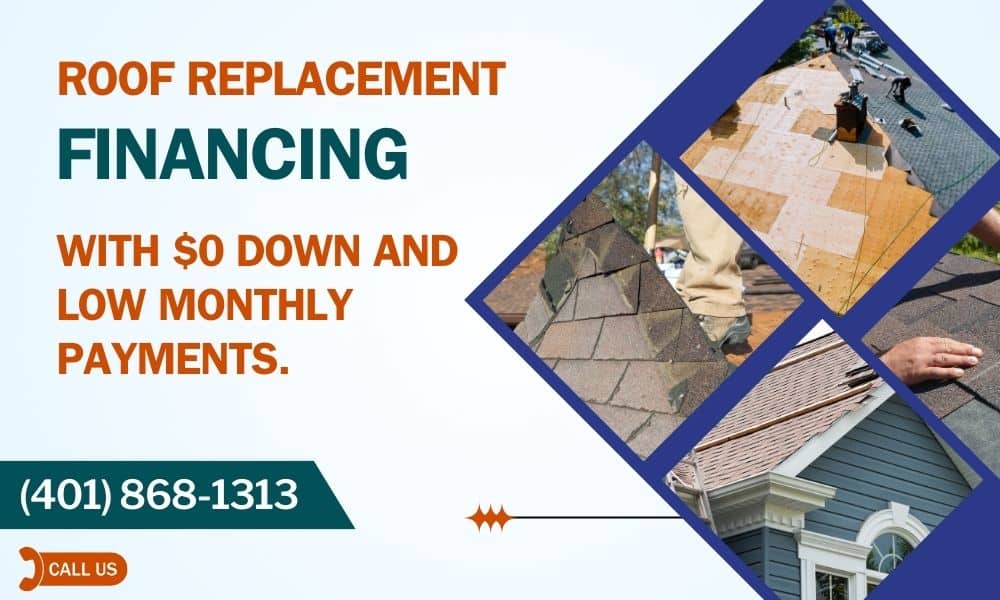
Flat roofs
Flat roofs often suffer from leaks than pitched roofs due to their lack of natural drainage.
Ponding water, caused by inadequate slopes or clogged drains, can lead to water infiltration during heavy rain. Additionally, aging flat roof materials such as tar and gravel may degrade over time, compromising waterproofing capabilities.
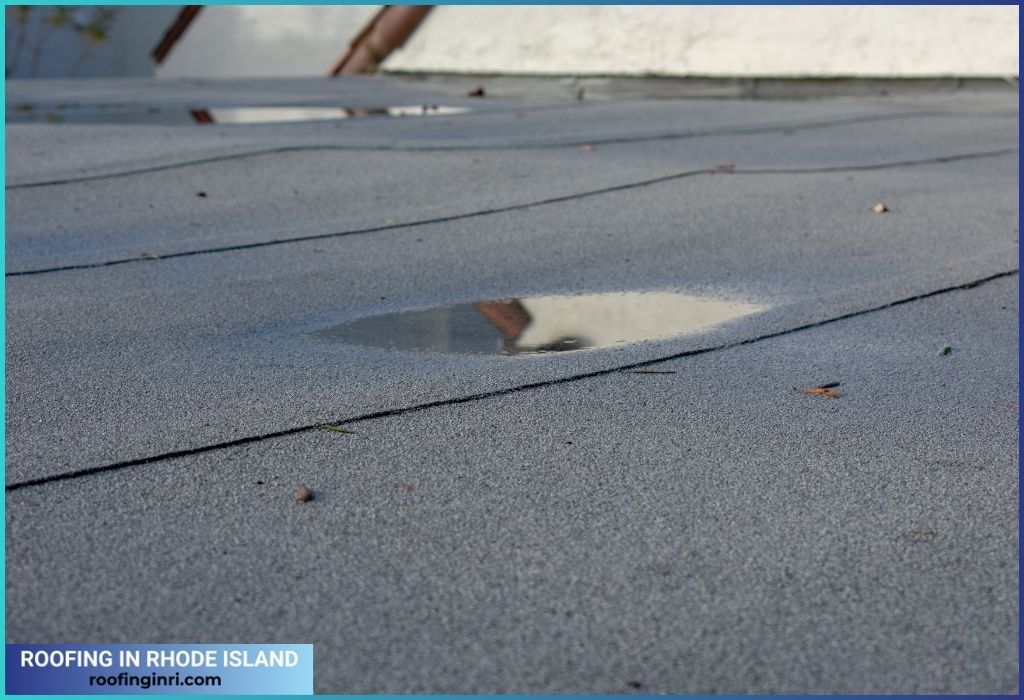
To mitigate leaks on flat roofs, ensure proper drainage by regularly clearing debris from gutters and drains. Consider installing tapered insulation to promote water runoff and prolong the lifespan of your roof.
For older flat roofs, you should do a professional assessment and maintenance to address underlying issues and prevent future leaks.
Read also: 11 Things you should do when your roof is leaking
Chimney issues
Chimneys are a common source of roof leaks, particularly at the junction between the chimney and the roof. During heavy rain, a cracked mortar, damaged flashing, or deteriorated chimney caps can seep water into the attic or interior walls.
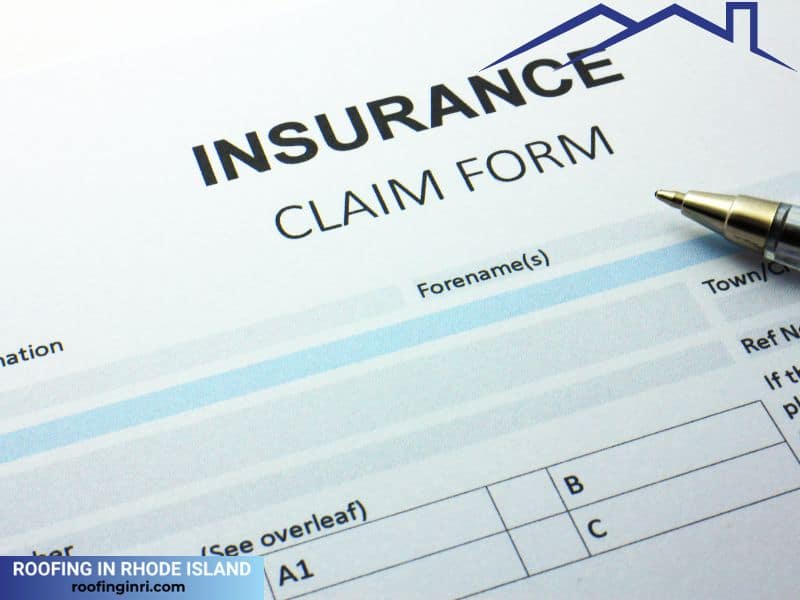
Pay close attention to the chimney flashing and mortar joints. Replace any missing or damaged flashing and seal gaps with high-quality caulking or mortar.
Read also: Is roof replacement tax deductible?
Plumbing leaks
Plumbing vents penetrate the roof surface to allow for proper ventilation of plumbing systems. However, compromised vent pipe seals or damaged vent boots can lead to leaks during heavy rain.

Additionally, condensation buildup within vent pipes can exacerbate the problem, especially in colder climates.
Inspect plumbing vents for cracked or deteriorated seals, focusing on the junction between the vent pipe and flashing. Replace damaged vent boots and ensure a watertight seal around the vent pipe.

Consider installing vent pipe extensions to prevent water from directly entering the pipe opening during heavy rain.
Read also: Your options when you need a new roof but can’t afford it
Improperly installed or rusted flashing
Flashing is a crucial barrier against water intrusion at roof intersections, such as valleys, dormers, and vents. Improper installation, corrosion, or damage to flashing can compromise its effectiveness, leading to leaks during heavy rain.
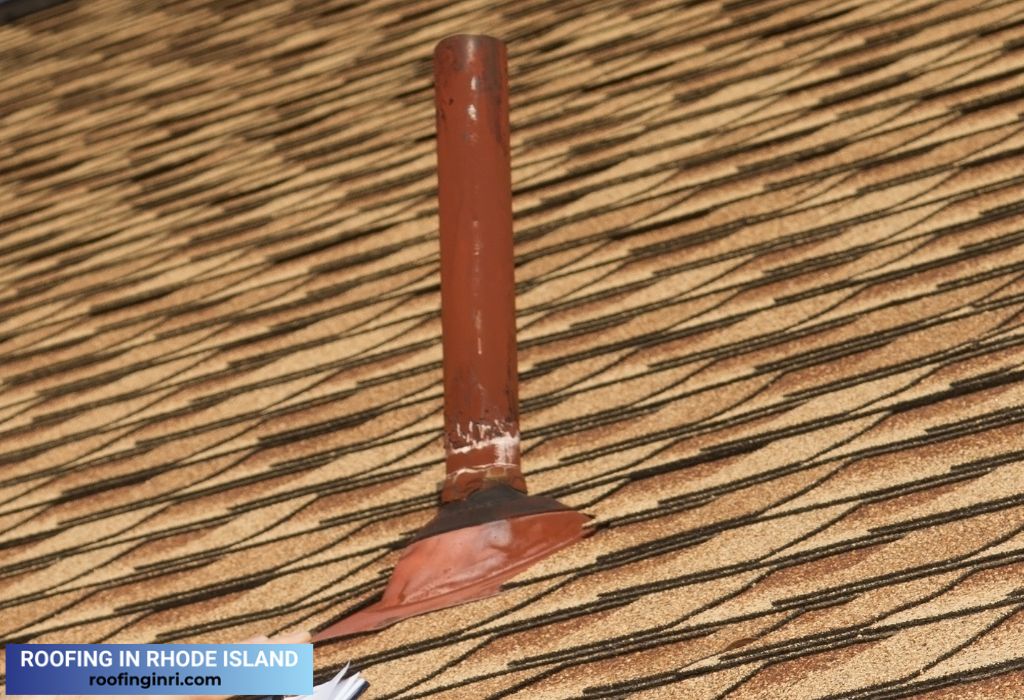
Inspect flashing for signs of rust, corrosion, or gaps between joints. Replace damaged flashing and seal gaps with roofing cement or silicone caulk.
Properly integrate flashing with adjacent roofing materials to ensure a seamless and watertight barrier against moisture intrusion.
Read also: The 9 most common roof repairs
Pipe boot failure
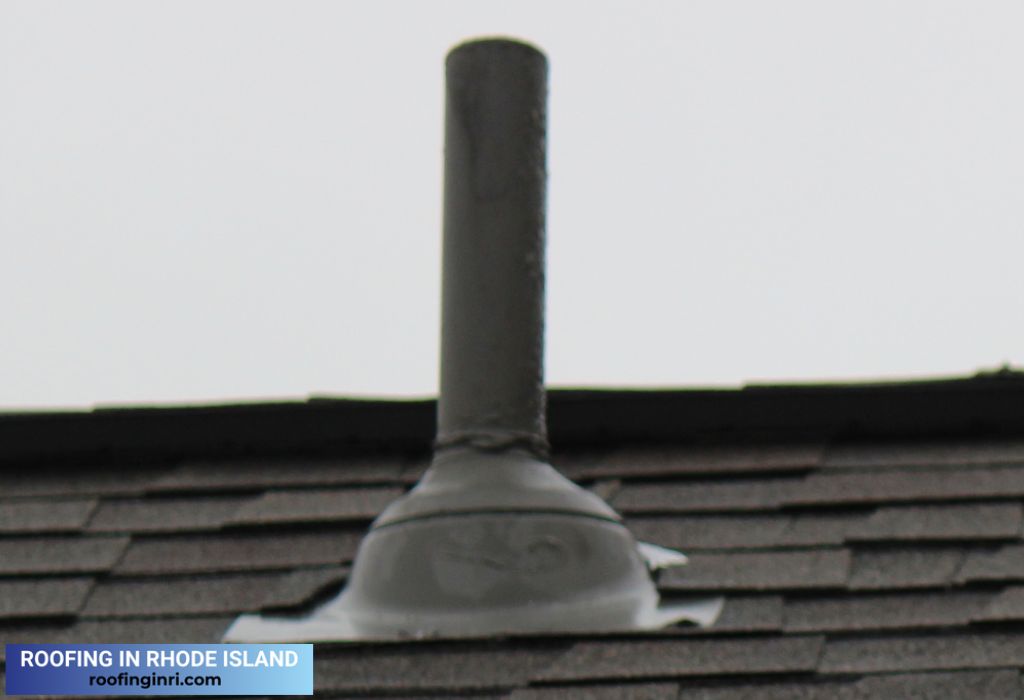
Pipe boots, also known as vent pipe boots or vent pipe collars, seal the junction between vent pipes and the roof surface.
Over time, rubber pipe boots may degrade due to exposure to sunlight, temperature fluctuations, and weathering, resulting in leaks during heavy rain.

Inspect pipe boots for cracks, tears, or deterioration of the rubber seal. Replace damaged boots with high-quality, weather-resistant alternatives designed to withstand harsh environmental conditions.
Properly secure the new pipe boot to the roof surface and ensure a tight seal around the vent pipe to prevent future leaks.
Read also: Modern roofing ideas
Sitting debris in roof valleys
Roof Valley is an interjunction where two slopes meet together. See the picture below to understand it better.
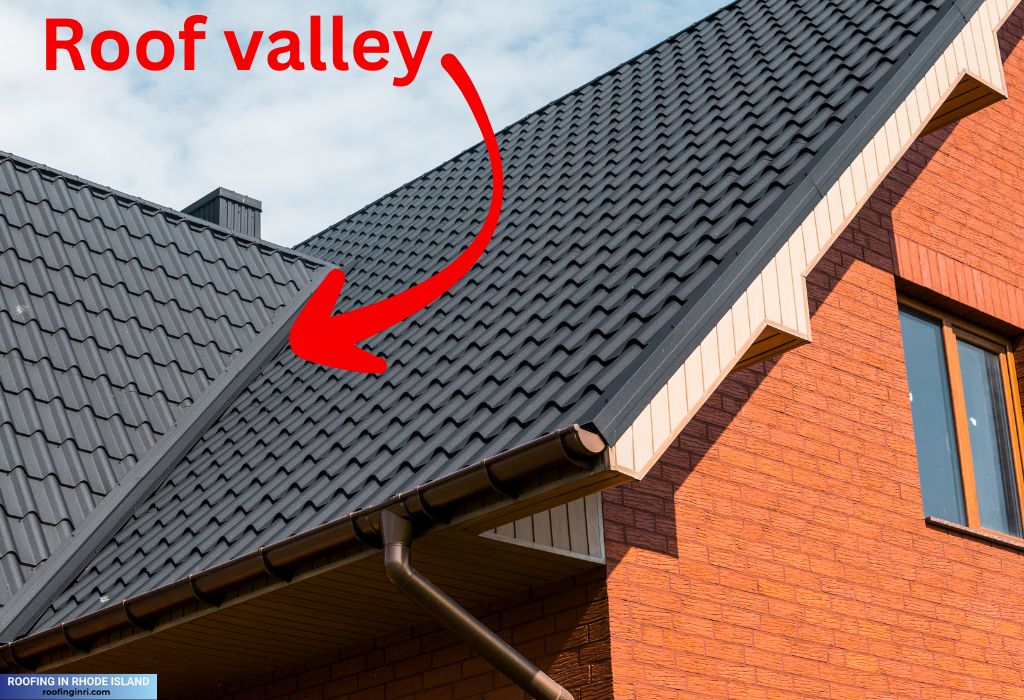
Roof valleys, where two roof slopes intersect, are prone to debris buildup, especially in areas with overhanging trees or nearby foliage. Accumulated debris can impede water flow, leading to ponding and eventual leaks during heavy rain.
Clear debris from roof valleys regularly to facilitate proper water drainage and prevent blockages. Trim overhanging branches from the roof surface.
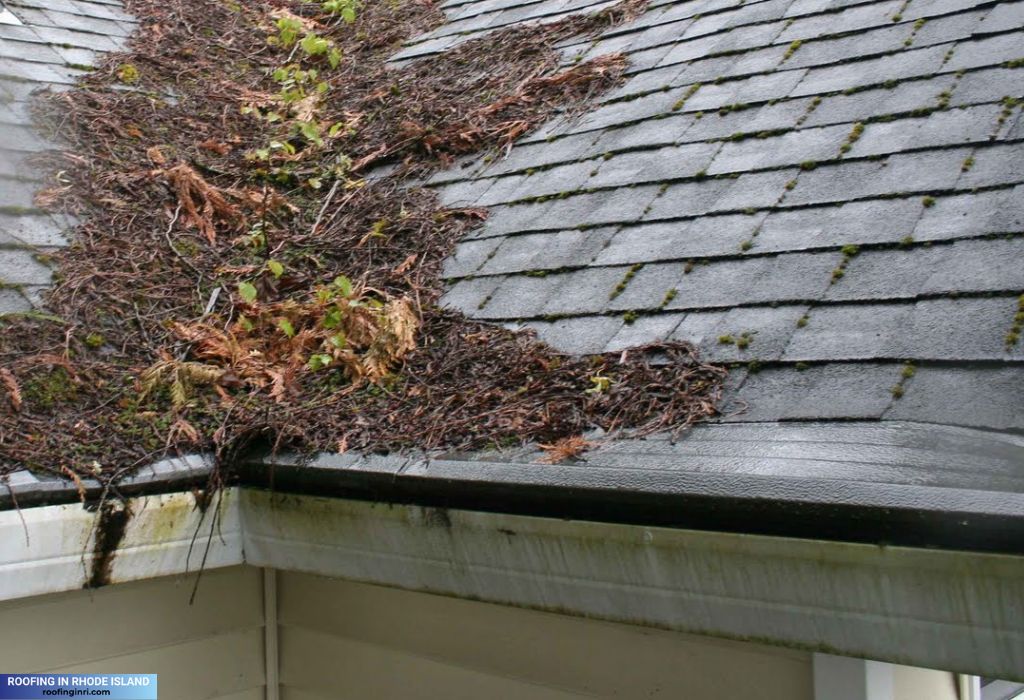
Consider installing gutter guards or screens to prevent debris from entering roof valleys and gutters, reducing maintenance requirements and minimizing the risk of leaks.
Read also: 10 essential tips for roof maintenance and repairs
How do you fix a leaking roof from the inside?
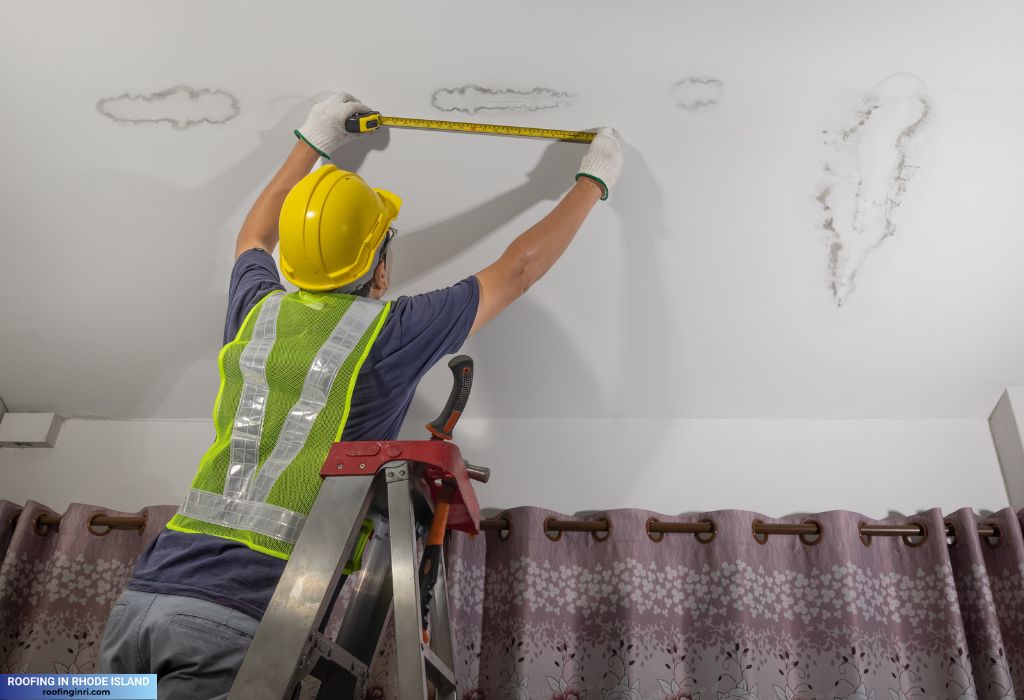
Locate the area where water is entering the interior space, typically indicated by water stains, dampness, or dripping.
Once you’ve identified the source of the leak, determine the appropriate course of action.
Here are some tips for fixing leaks temporarily (inside the roof/ceiling).
- Tarpaulin Covering: In severe leaks, temporarily cover the affected area with a tarpaulin to prevent further water intrusion until you make permanent repairs.
- Interior Patching: Use roofing cement, silicone caulk, or roofing tape to seal small leaks or cracks from the inside. Apply the patching material directly to the affected area, ensuring a tight seal to prevent water from entering.
- Bucket Placement: Place buckets or containers strategically beneath the leak to catch dripping water and minimize damage to interior surfaces. Empty the buckets regularly to prevent overflow and water damage.
- Ceiling Repair: If water damage has occurred to interior ceilings or walls, assess the extent of the damage and repair or replace affected materials as needed. Dry the area before applying any patching or finishing materials.

While temporary fixes can provide immediate relief, addressing underlying issues is essential—contact roofers in your local area for a permanent solution.
Read also: How to repair roof flashing?
Conclusion
Roof leaks in heavy rain can be frustrating and cause homeowners concern. Understanding common causes and implementing practical solutions can help mitigate the risk of water damage.
By proactively addressing issues such as improper flashing, damaged skylights, or debris buildup, you can safeguard your home against leaks and ensure the longevity of your roof.
If you’re unsure about the extent of damage or how to proceed with repairs, don’t hesitate to seek professional assistance from qualified roofing contractors or inspectors. You can keep your home dry and protected with proper care and attention, even during the heaviest of rains.

